If you’re just getting started with houseplants and looking for an easy to care for plant, then a Marble Queen Pothos might just be the ticket! For one thing, this plant is drought resistant and isn’t overly picky about the soil or light conditions either.
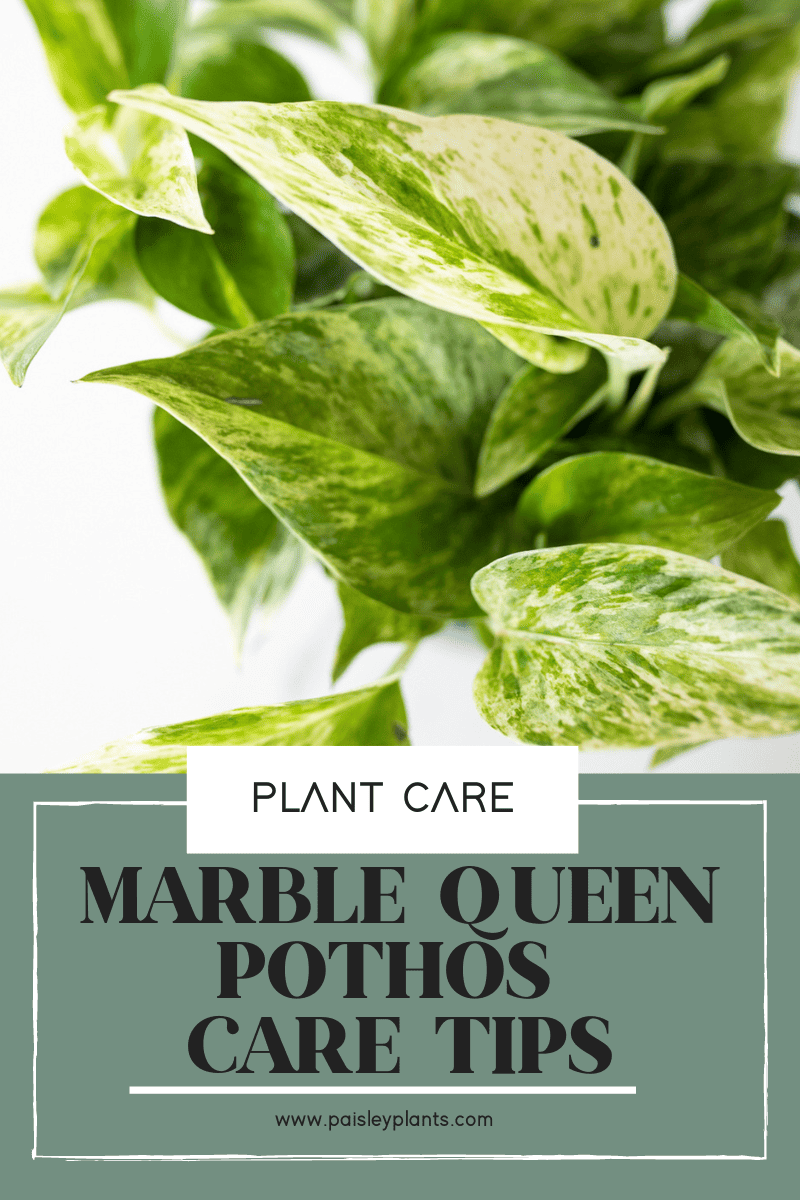
Table of Contents
Marble Queen Pothos Background and History
These plants are native to French Polynesia. They are characterized by their creamy white and green marbleized foliage. When grown in its native form, this plant is almost impossible to kill. It can easily become invasive! It will quickly grow up trees sometimes reaching up to over 60 feet tall!
Common Name
The common names is Marble Queen Pothos and also sometimes Devil’s Ivy (like the golden pothos) or Centipede Vine. The scientific name is Epipremnum aureum.
Varieties
There is also a pothos plant called a ‘Snow Queen.’ The difference between the ‘Marble Queen’ and the ‘Snow Queen Pothos’ is that the Snow Queen’s leave are more white with spots of green while the Marble queen is more green with spots of white. The botanical name for the ‘Marble Queen’ is Epipremnum aureum ‘Marble Queen’ and the botanical name for the ‘Snow Queen’ is Epipremnum aureum ‘Snow Queen.’ They are the same species of plant, just different varieties or cultivars.
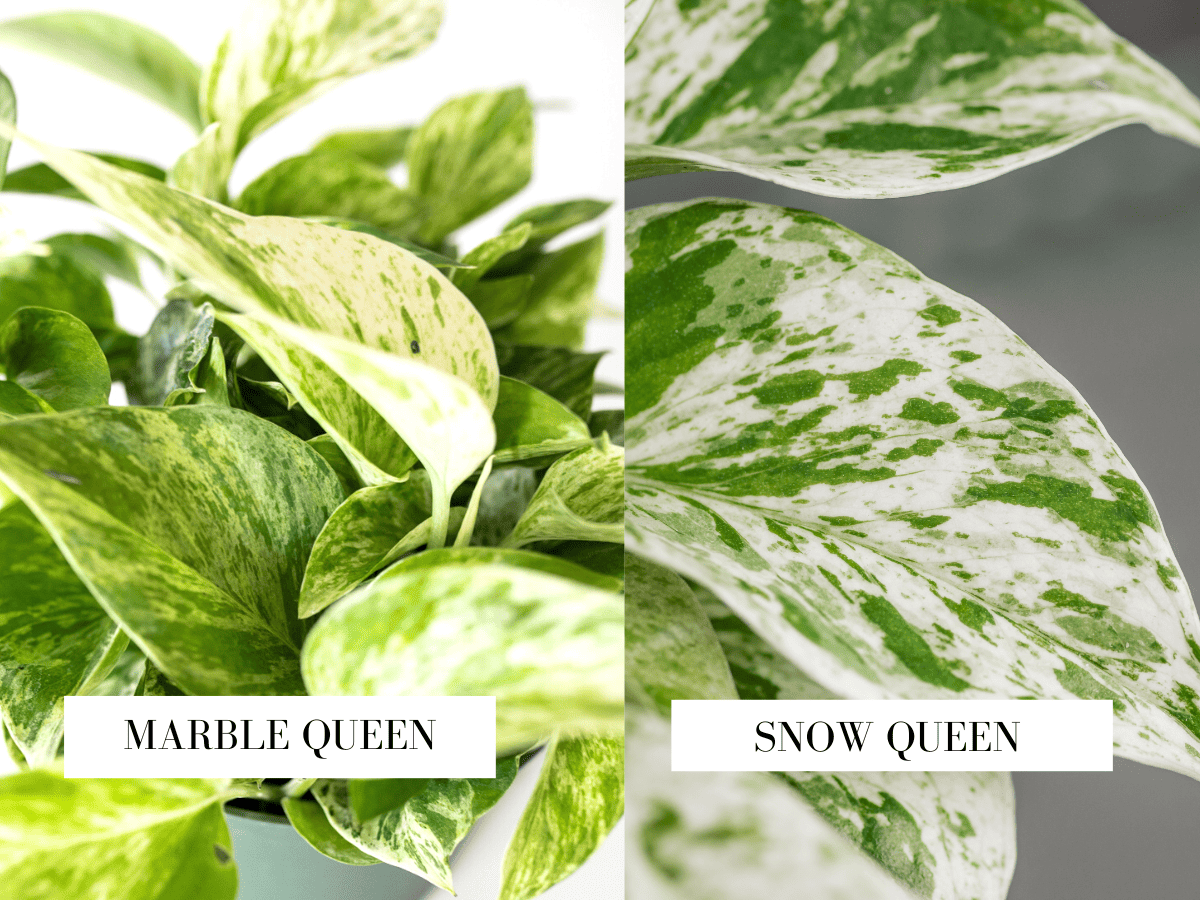
Toxicity
Unfortunately, all parts of the Marble Queen Pothos are toxic to both humans and pets. The symptoms can include an intense burning sensation of the mouth, throat, lips and tongue. It can also include intense drooling, choking and swelling of the throat, and inability or difficulty swallowing.
When any part of the Marble Queen is ripped or torn and ingested, it can cause intense pain if chewed by children or pets. Because of this, you will want to keep these plants in a location where they can’t be reached by either your kids or your pets!
Marble Queen Pothos Care Tips
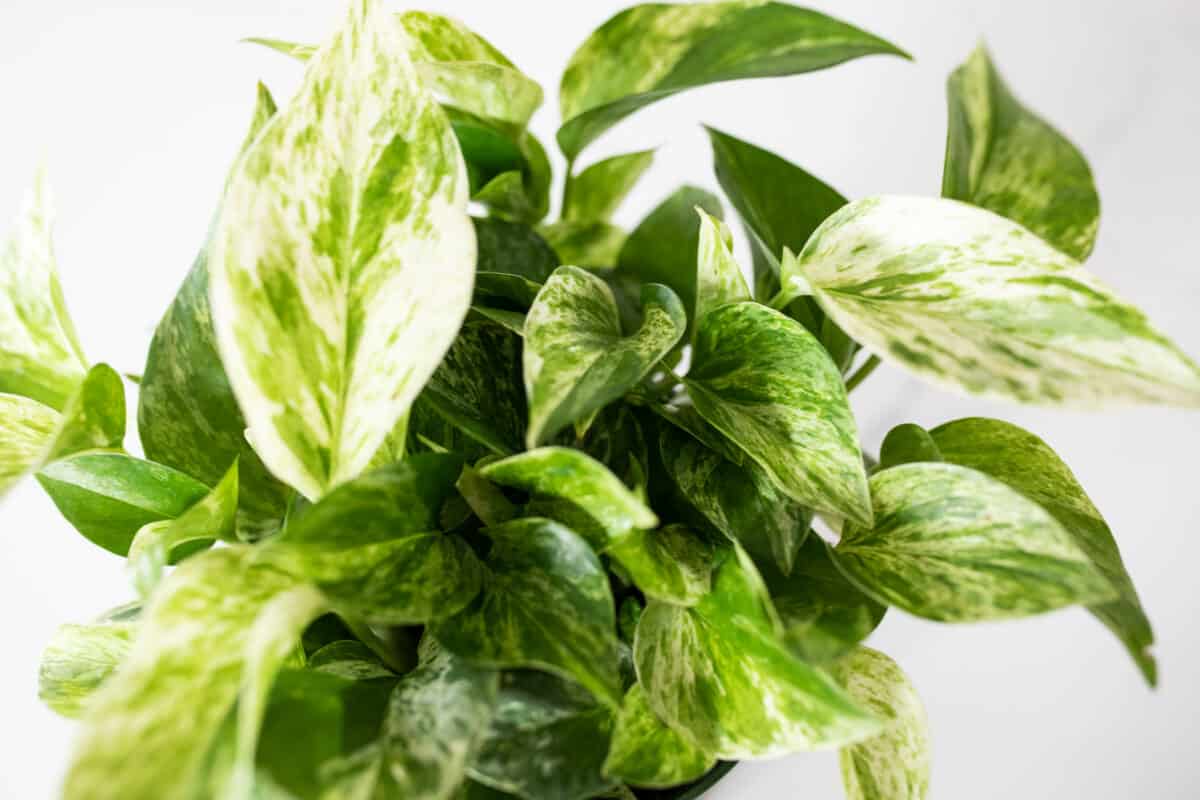
Water Requirements
You should water your Marble Queen Pothos plants about once a week. Allow the top 50% of the soil to dry out before you water the plant again. These plants are particularly drought tolerant, so can be allowed to dry out a bit more than others before watering them again.
Give your plant a good soak and let the water drain out the drainage hole at the bottom of the pot. Be sure that you don’t let the soil become saturated or you might be subjecting your plant to root rot. Another indication your plant needs water is if the leaves begin to show signs of wilting.
Light Requirements
Because your Marble Queen Pothos is a variegated leaf plant, it needs to be kept in bright indirect light. It can also survive in low light conditions, but the variegation will fade if it’s not getting enough light.
The leaves will revert to only green leaves without the cream colored variegation if you keep it in lower light conditions. You also want to remember that if you put your plant in direct sunlight, it can scorch or burn the leaves.
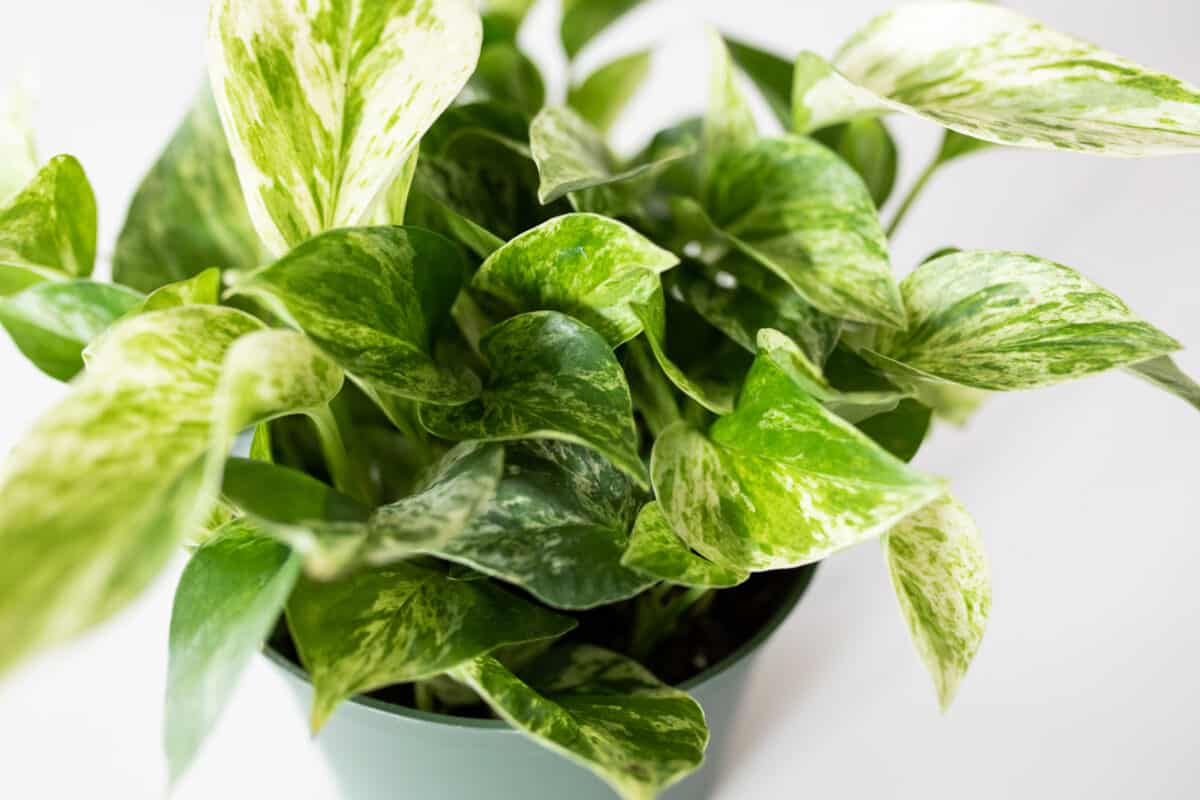
Soil Requirements
Since the Marble Queen Pothos is so easy to care for, one good thing is that it can pretty much survive in any type of soil as long as it is well draining. You can use a standard indoor potting mix and it should work fine.
You just want to be sure that there is good drainage with proper drainage holes in the bottom of the pot. This will allow the soil to drain and not become soggy or water logged. No plant likes wet feet!
Fertilizer Requirements
The benefits of fertilizer are quite noticeable for a Marble Queen Pothos. If you fertilize your plant once every two weeks, you will see the new growth vines grow quickly.
You can use a liquid fertilizer diluted to ¼ of the recommended strength and this will give your plant a nice boost! You should only use this during the growing season, which is usually the spring and summer months as plants tend to go dormant during the winter months.
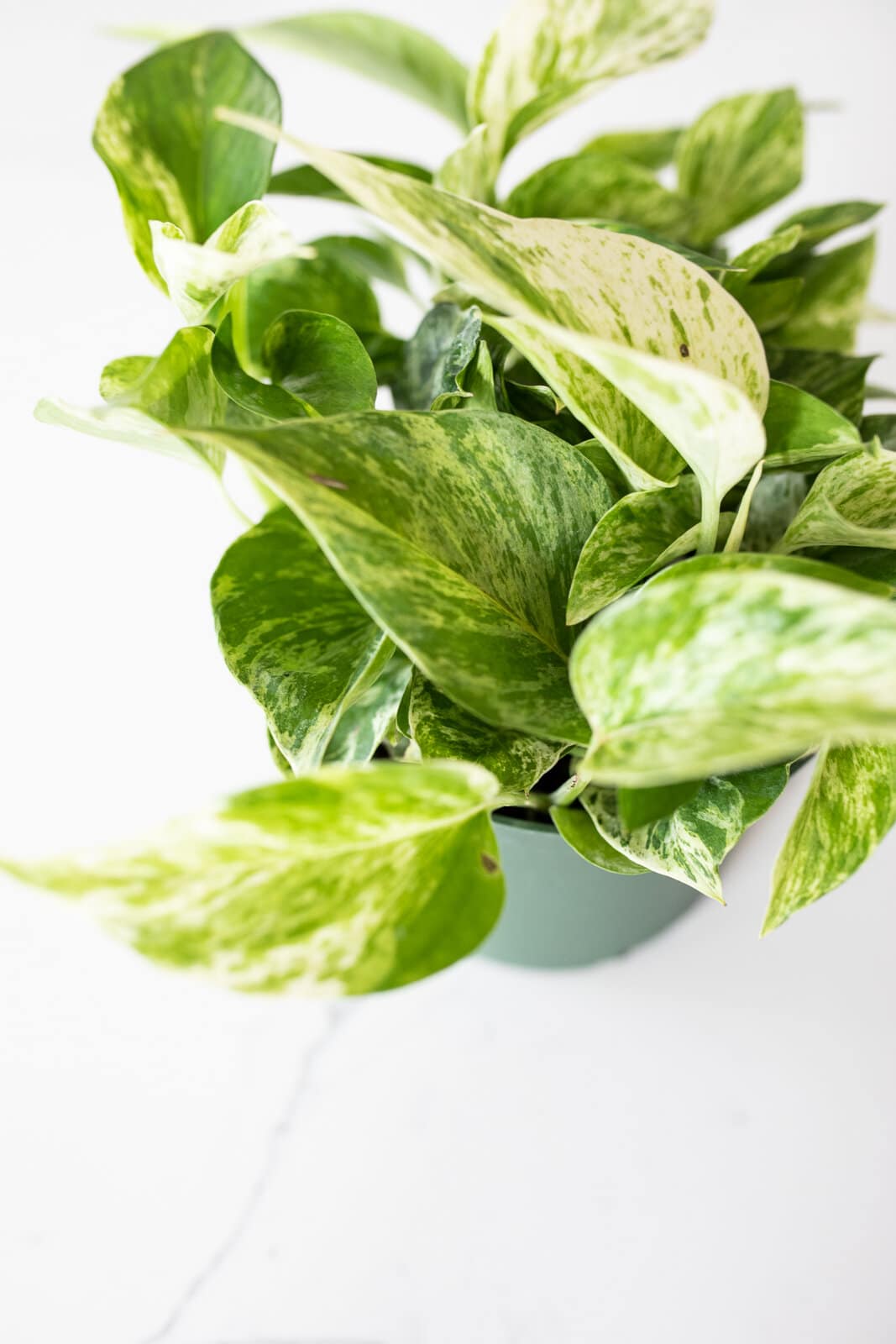
Temperature and Humidity Requirements
The general range of temperature for your Marble Queen Pothos should range between 65 and 85 degrees F. You can keep your plant in temps as low as 55 degrees F, but you won’t want to keep it in a temp any lower than that for an extended period of time.
As far as humidity goes, a good range should be between 40% and 60% humidity. Depending on the humidity in your home, you will have to determine if you need to use a humidifier or a pebble tray to keep the humidity at the desired level.
Pests and Diseases
The most common pests to watch for with your Marble Queen Pothos are spider mites, mealybugs, scale and fungus gnats. Each of these pests need to be dealt with in different ways. At the first sign of these pests, you need to isolate your plant to prevent the spread of pests to other houseplants.
The spider mites can be taken care of by spraying the plant with a jet of water or using an insecticidal soap to clean them off. Mealybugs can be removed by wiping the leaves with a cotton swab dipped in alcohol or using an insecticidal soap.
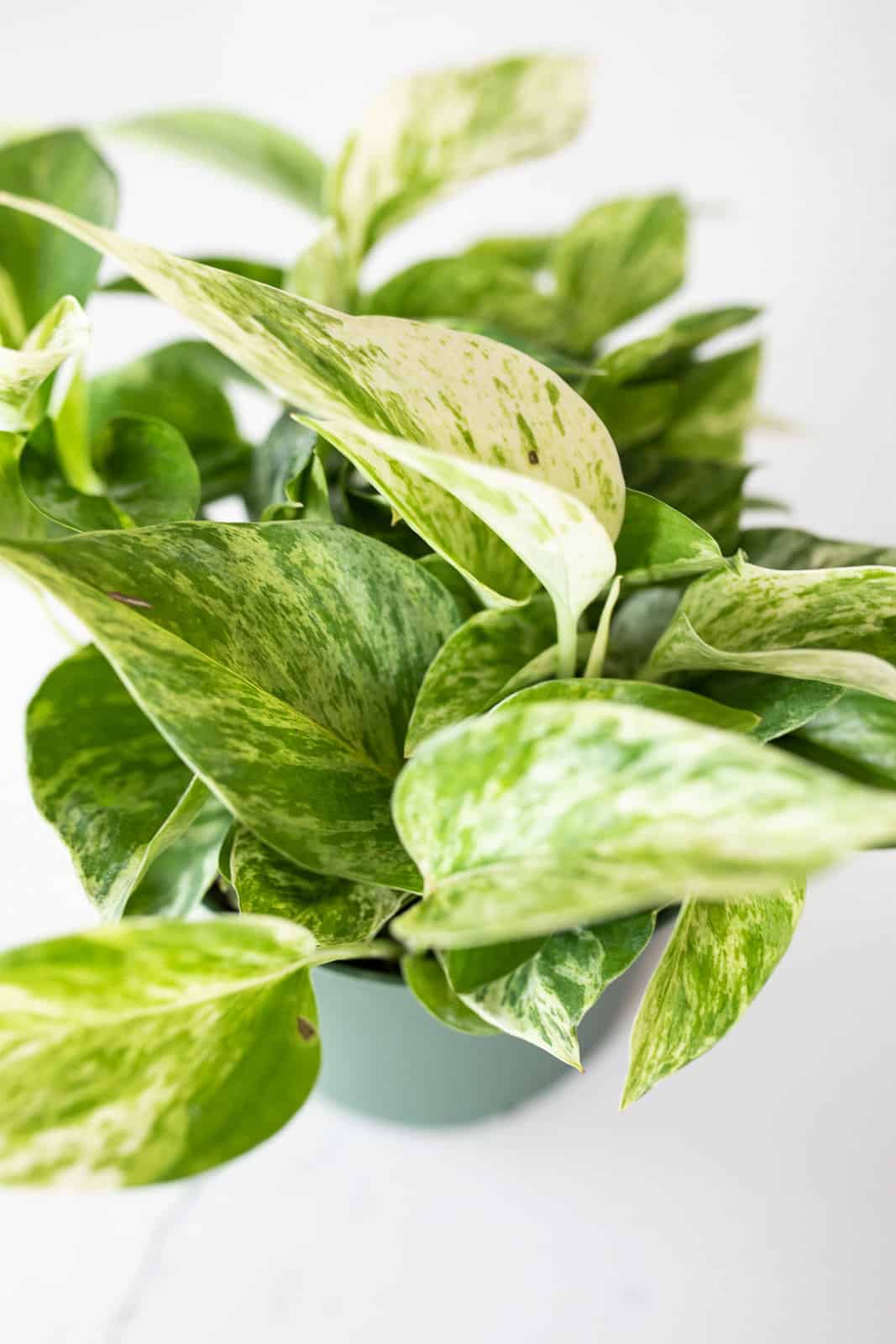
Scale insects can also be removed by wiping the leaves with a cotton swab dipped in alcohol or using an insecticidal soap. Fungus gnats are sometimes hard to get rid of, but there are several ways to deal with them. You can place a container with apple cider vinegar and a few drops of dishwashing liquid near your plants and the bugs will be drawn to the liquid and drown.
There are also sticky traps you can place in your plants to attract the gnats. There are several items on the market to deal with them, so you can either check them out at your local nursery or go online to a site like Amazon to see what’s out there to deal with these nasty pests!
Root rot is also a problem if you overwater your plant. By simply not overwatering your plant, you can go a long way to preventing this problem. Leaf spot is another problem and is a fungal disease.
Once you discover Leaf spot, you will need to remove the diseased leaves. This can also be prevented in large part by not overwatering and ensuring there is good air circulation around your plants. Also allow your plant to dry out a bit between waterings.
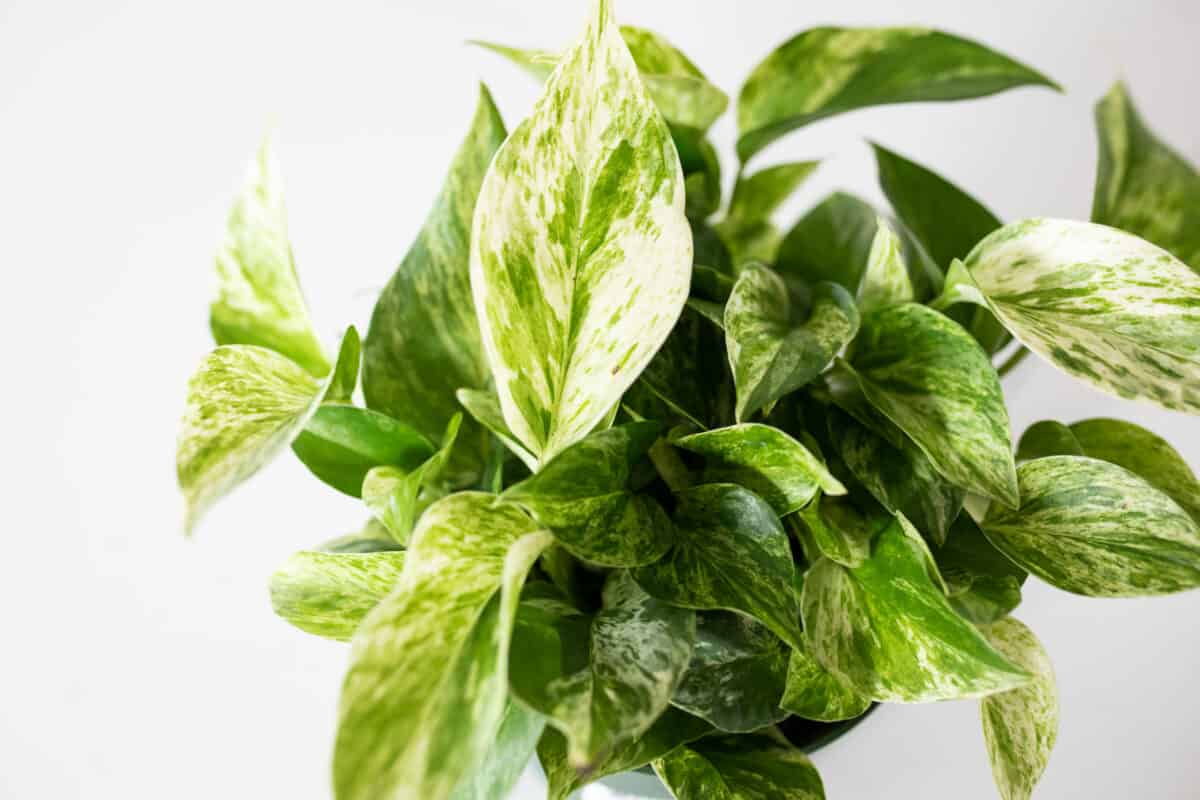
Pruning and Repotting
If your Marble Queen Pothos starts to look a bit leggy, maybe it’s time to prune it! You can prune these indoor plants at any time during the year, but the best time of year is usually during the growing season, or the spring or summer months.
Gather your tools, which should consist of a pair of sharp pruning shears or scissors. If your skin is sensitive to plant sap, you may also want to have a pair of gloves on when you start this process.
Look for a node (the little bump where the leaves connect to the stem – this is where aerial roots would grow from) and cut right above the node. Make a clean cut above the node. It won’t hurt your plant to cut off longer vines either, if necessary. Wherever you cut off foliage, your plant will grow bushier, so that is a good thing!
Now you can place your stem cuttings into water and watch the roots grow! They will usually grow nice roots within a week or two and you will then have some new cuttings for another beautiful Marble Queen Pothos to add to your collection!
When it comes to repotting your plant, you will need to do this once the roots begin to grow out of the bottom of the pot. You may want to just pull the plant out of the existing pot once a year or so to see what the roots look like.
These plants don’t mind being a bit rootbound, but if the leaves begin to droop quite a bit, then you should probably think about repotting your plant. Once you take your plant out of the pot, loosen the roots and shake off the old soil.
Be sure to choose a new pot that is at least one to two inches larger than the old one. Add new potting soil as this will also have nutrients that the old soil has long since used up. Put your plant into the soil, secure it in the soil, and then give it a good watering.
Common Problems
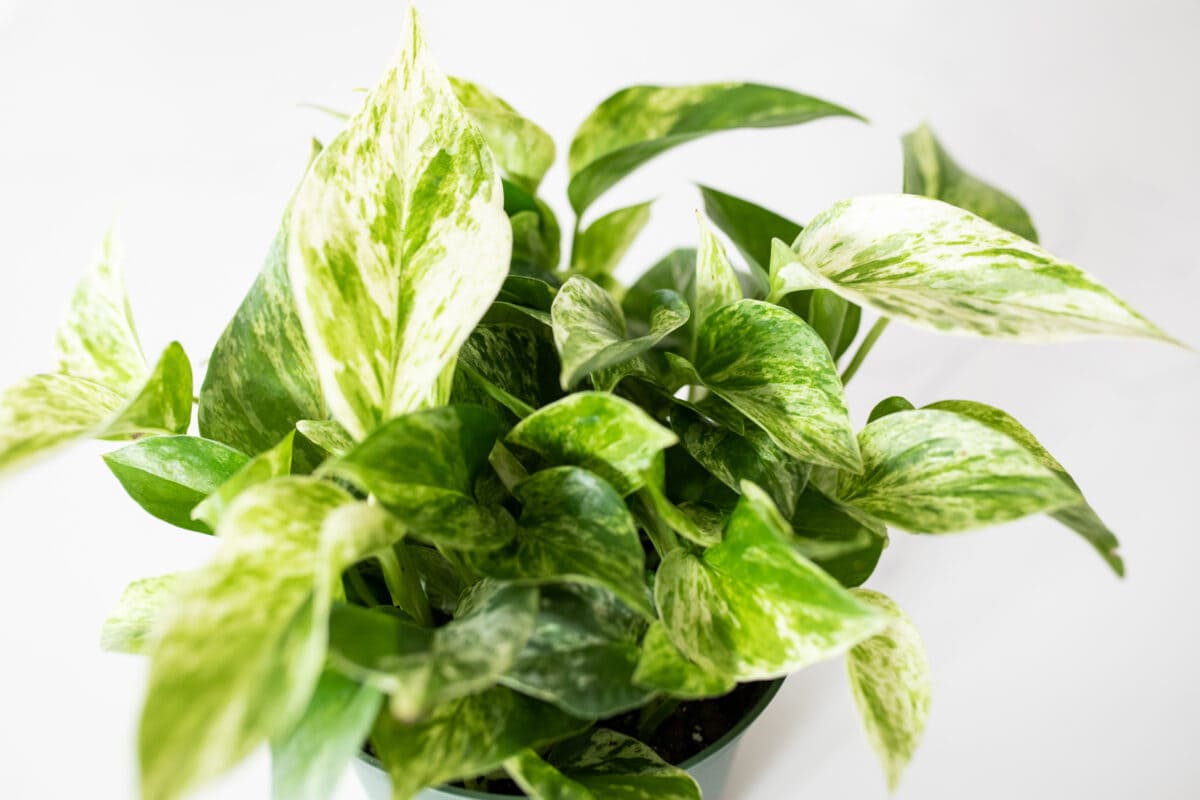
Drooping Leaves
If you notice the leaves on your Marble Queen Pothos start to droop, this is usually a good indication you need to water the plant. Check the soil on a regular basis to prevent this from happening and also keep a regular watering schedule.
Browning Leaves
Yellow leaves, brown leaf tips or brown leaves is usually an indication of underwatering or not watering your plant on a regular schedule. If you notice this, you will need to take steps to maintain a regular watering schedule. They will usually start by turning yellow – this is your sign to check on your plant and give it enough water if it’s dry.
Also, you need to keep your plant away from A/C vents or drafty doorways. This can also contribute to making the leaves or leaf tips turn brown. You should also be sure the soil is not compacted and make sure it is a loose type of potting soil.
Curling Leaves
Curling leaves are a sign of too much direct sunlight on your Marble pothos. If this happens, the leaves will begin to curl inward so they don’t take on too much light. This can be corrected by moving your plant to a location with bright indirect sunlight.
It can also be an indication of underwatering or low humidity. These two problems are easily corrected by watering on a regular basis and keeping the humidity on an even acceptable level, as mentioned above.
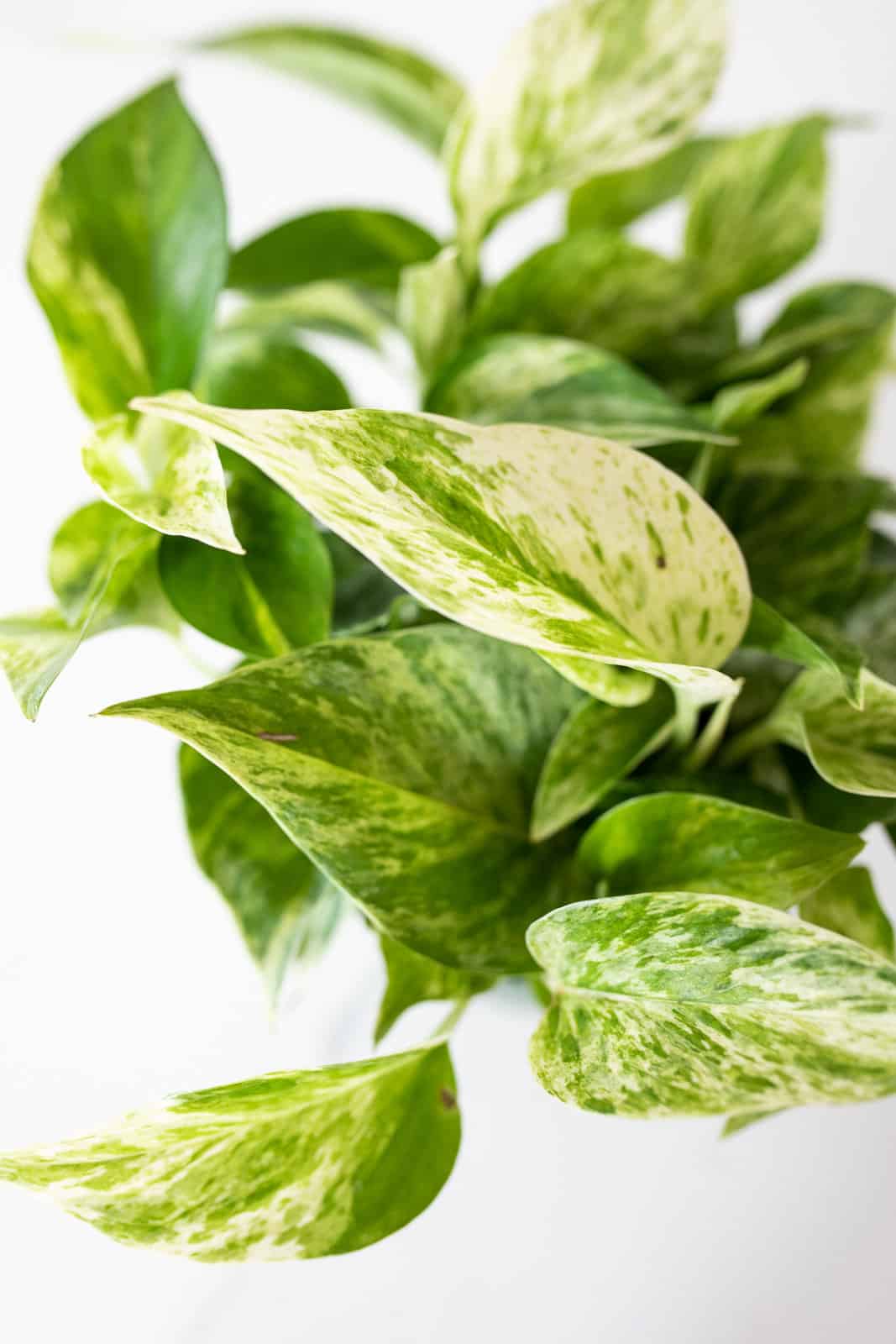
FAQs
Yes, this plant is an ideal plant to grow in a hanging planter as it is a vining plant. The vines will grow as long as you allow them to grow if you don’t prune them often. They also do well kept in a pot on a high shelf in any room!
Yes, it does! Even though it is toxic, it does help purify the air in your environment. It is known to purify the air of both benzene and formaldehyde. This is an awesome plant to keep in every room in your house because of this!
Yes, you can place your Marble Queen outdoors during the summer months on a deck or porch. Just be sure it isn’t in direct sunlight or the leaves will get scorched or burned. This will also give your plant a chance to get some added growth during these months to prepare for its dormancy during the long, cold winter months indoors!
In Conclusion
Miss Marble Queen Pothos is a gentle, beautiful lady that is a great girl to have in your plant collection. She will offer a lot of benefits with her natural beauty, her air purifying qualities, and the sense of calm she will bring to your household.
When you do decide to prune off some of her legginess, she will once again give you an added benefit of more and more plants that you can spread all over your home or office! She just keeps on giving and giving! What a woman, huh?? As always, keep on growing!
